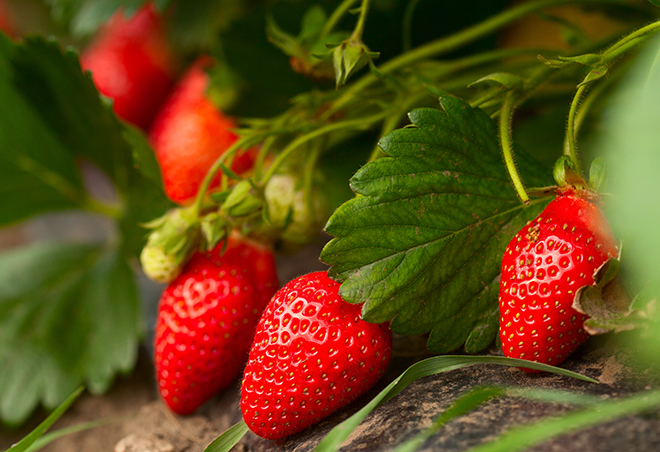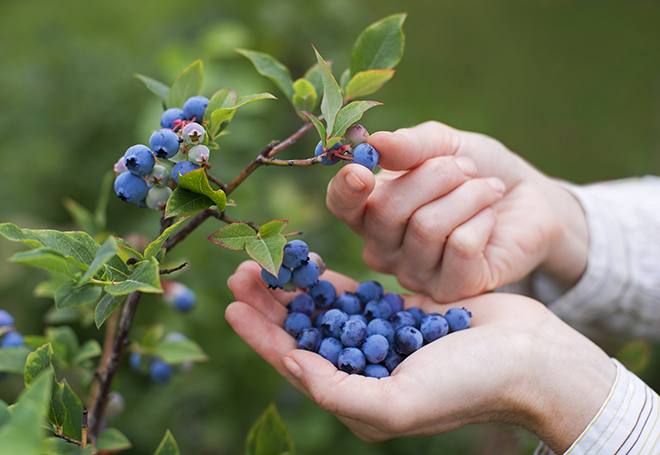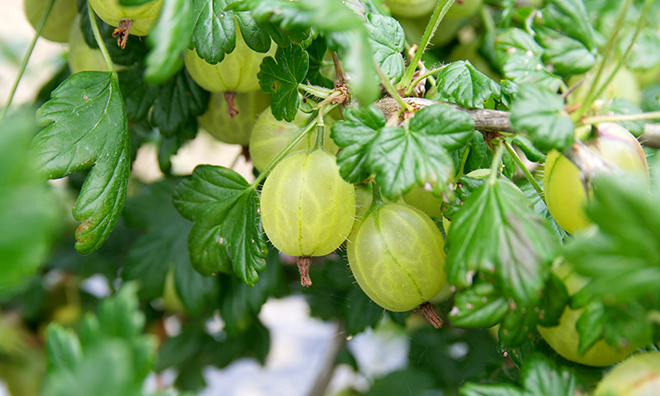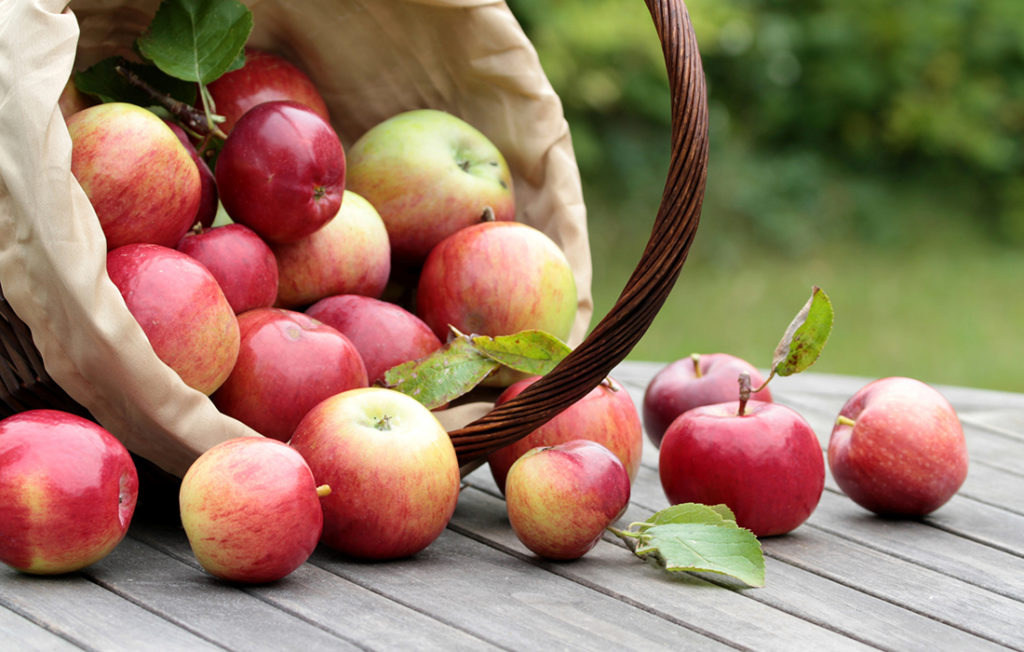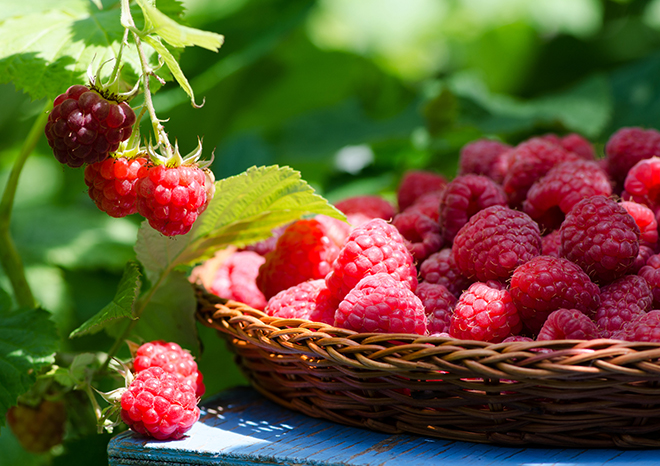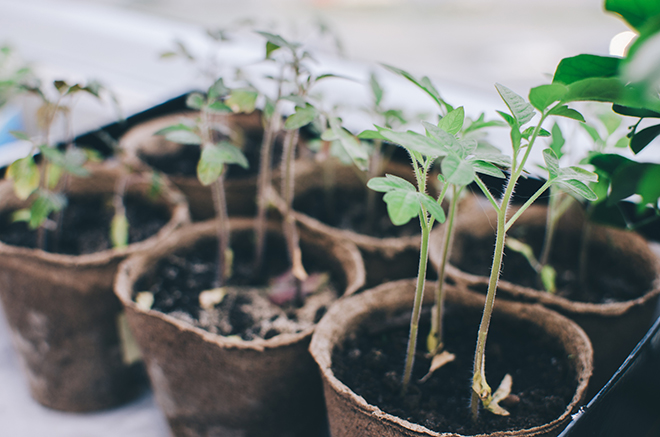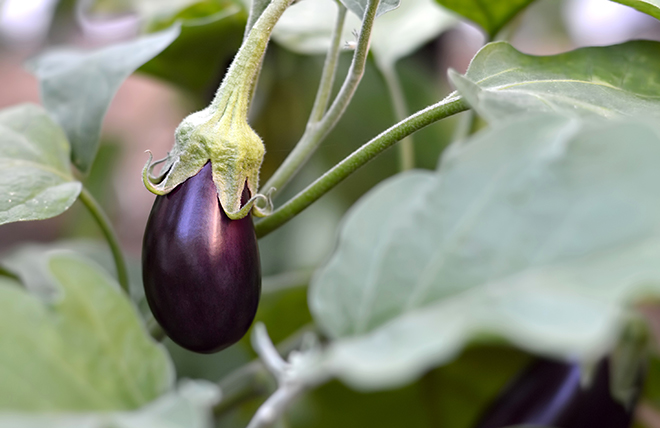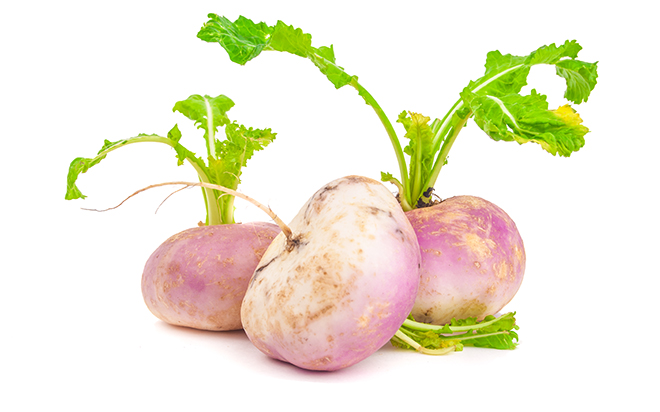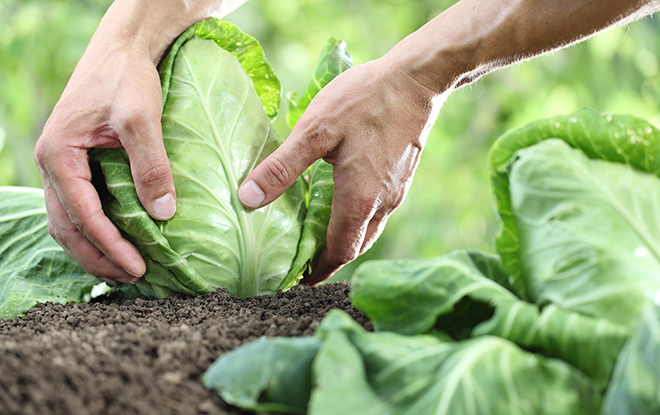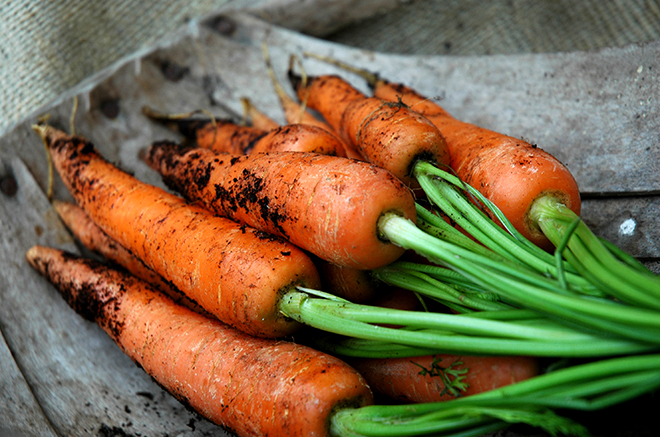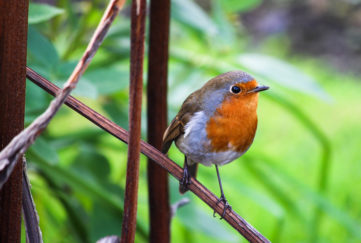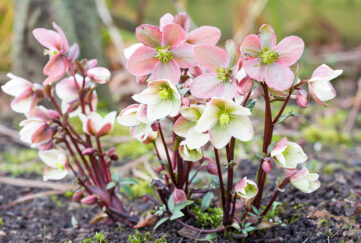Grow Your Own Fruit & Veg For Beginners
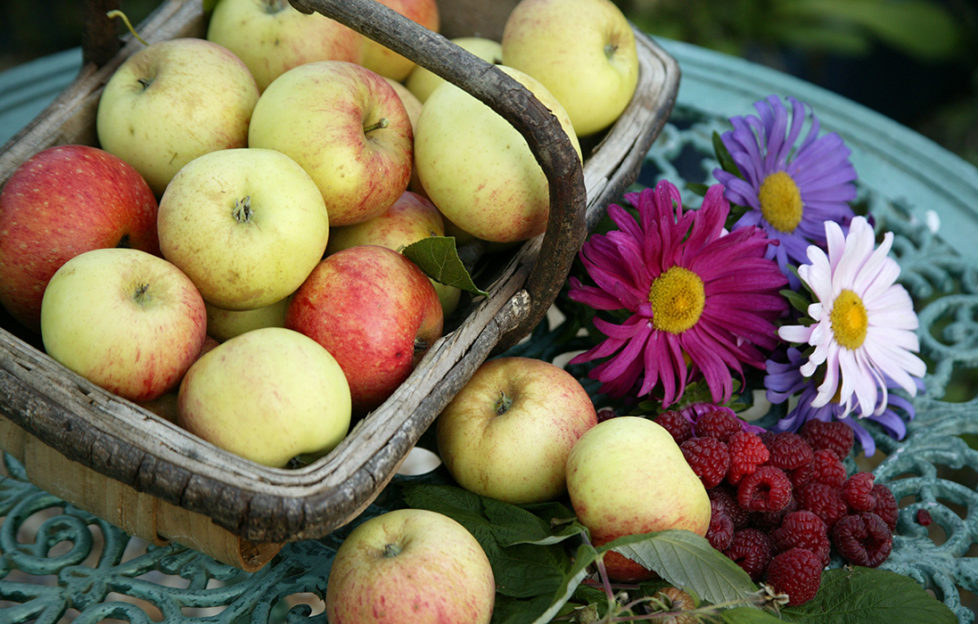
We asked our colleagues at Grow Your Own magazine to recommend the easiest fruit and veg to grow at home, to help us all get started. Plant or sow now for a bumper crop later in the year!
Find more great gardening content from Grow Your Own magazine at growfruitandveg.co.uk.
If you don’t have a large garden, ask at your local gardening centre for varieties you can grow in tubs and planters.
Top choices to grow at home
Strawberries
For a classic taste of summer, strawberries are a fantastic investment of your time. Different types will produce yields at varying times of the year, and if you make good use of this you can considerably extend the harvesting period.
When to plant: March to April
When to harvest: July and August
Recommended varieties: ‘Aromel AGM’ and ‘Florence’
Blueberries
These berries are a wonderful treat that will save you a lot of money in comparison to shop-bought packs. The bushes are very productive, but they require acidic soil to thrive. If conditions on your plot are not suitable, try growing them in large pots. You will need at least two plants in order for them to cross-pollinate one another.
When to plant: All year round
When to harvest: July to September
Gooseberries
Often overlooked and only available in supermarkets for a limited amount of time, gooseberries have a multitude of uses in the kitchen and they are very straightforward to plant and care for. The crops can be grown as bushes but they can also be trained up a wall to save space.
When to plant: Autumn to winter, or any time of year for pot growing bushes
When to harvest: June to July
Recommended varieties: ‘Invicta’ AGM or ‘Leveller’ AGM
Apples
This traditional fruit is a must-have addition for any budding grower. If cared for correctly, apples trees are productive over many years and the yields store well. There are many varieties available that will suit all types of gardens and allotments, including dwarf cultivars that can be grown in pots.
When to plant: November to March
When to harvest: August to November
Recommended varieties: ‘Red Sun’ and ‘Discovery’ AGM.
Raspberries
If pruned regularly, this plant will reward you with an abundant supply of berries. Raspberries can be trained to grow in a variety of systems to suit gardens and allotments of most sizes. It’s a good idea to net your canes to protect the berries from hungry birds.
When to plant: November to April
When to harvest: June to October
Recommended varieties: ‘Autumn Bliss’ AGM and ‘Glen Ample’ AGM
Tomatoes
Relatively simple to care for there is nothing quite like the reward of a home-grown tomato. You can sow seeds anytime between January and April in a seed tray filled with compost. Plant them at a depth of 0.5cm and water sufficiently. Place them in a warm area, such as in a propagator or on a windowsill inside, so that they are at the appropriate temperature for seed germination to occur (15-20ºC). You will start to see seedlings emerge 1-2 weeks from sowing. Continue to water crops – the soil should be moist rather than waterlogged or dry. When plants reach 10-15cm high, transplant each into its own pot. Crops will continue to grow and when roots start appearing through the container holes they can be moved into larger pots from April to May. Alternatively you could plant them in greenhouse borders or in grow bags. Pick when tomatoes are completely coloured.
When to plant: January to April
When to harvest: June to October
Aubergine
This veg is incredibly productive and easy to grow. Aubergines thrive in conditions that mimic their native environment, so warmth is key for success. The best time to sow seeds is between January and April. Outdoor temperatures will be too cold for this, so starting under cover in seeds trays or small individual pots is ideal. Fill containers with multi-purpose or seed sowing compost and gently pat this down to create an even surface. Do this in advance and store them somewhere warm such as an airing cupboard for a day or two for an extra boost. When you sow the seeds they will be placed in a warm, cosy space that they will thrive in. Create a drill in the seed tray that is 1 cm deep. Space the seeds evenly leaving 2.5 cm between each and cover with soil. Water thoroughly and place somewhere warm with a temperature between 18-25°C. Seedlings should appear within 2 weeks. When they reach 5-7cm high, move to individual 9cm pots. Once roots start poking out of the pots it’s time to move to bigger pots. Continue until you get to tubs 30cm in diameter. Alternatively you can plant them out from April-May when the frosts have passed, in a greenhouse or a sunny, sheltered spot. Water the roots well each time you transplant. Beautiful purple flowers will appear and over the course of a few weeks small fruits will emerge from them. Once this happens you can feed the crops with a high potassium liquid fertiliser every 2 weeks. After five aubergines have appeared on each plant, removed any remaining flowers to help ripening of existing fruits. When around 15cm in length, they are ready to harvest.
When to plant: January to April
When to harvest: August to October
Turnips
Turnips thrive in cooler temperatures with moisture-retentive soil, so consistent irrigation is crucial. Fast-growing, they can be ready for harvesting in as little as 6 weeks. Start sowing outside where they are to crop, but in the colder months they may benefit from cloche protection. Make drills 1.5cm deep and rows 30 cm apart. Sew seeds thinly every 2-3 weeks to ensure a continuous supply of harvests. Germination should occur within 14-21 days. When he seedlings reach around 10cm tall, thin them out to allow 10cm between each plant. Harvest by pulling the tops when they are the size of a golf ball, or leave to mature to the size of a tennis ball if they are an early type.
When to plant: April to August
When to harvest: March to December
Cabbages
There are a few different types of cabbage – spring summer and winter. These will all need sowing at different times, so do make sure you check on the packet of seeds you are using, but the care for all of these is the same. Cabbages enjoy a sunny site with soil that you have prepared in advance by digging in plenty of well-rotted organic matter. It is important to do this in advance, as fresh manure can scorch vulnerable seedlings. Firm the soil and give it a rake before sowing. Sow directly into the ground or in seed trays, to be transplanted outside once the seedlings are established. Seedlings will start to appear in 7-21 days. At this point thin them out so the strongest seedlings have space to grow on. Once these are established and have 5-6 “true leaves”, it is time to transplant them to their final growing space. Water well before you move them, and then give then another thorough soaking once they are in their new position. Make sure the earth is mounded up and firmed around the stem, as cabbages can grow rather large, and can be damaged by wind rock if they are not bedded in firmly. Leaves are irresistible to caterpillars, slugs and cabbage root fly, so it is worth covering your plants with a fine-grade netting, or a brassica cage.
When to plant: Sow in February to September, plant out in March to October
When to harvest: Janaury to December
Carrots
One of the most popular veg to grow at home, carrots are easy to cultivate and can be included in many different dishes due to their versatile, sweet flavour. There are plenty of varieties available that differ in size and disease-resistance. Due to their size, carrots are best grown in the ground to allow them to reach their full size. The ideal time to start is between March and June. First, thoroughly rake the soil to fine tilth and removed any weeds and stones, then water thoroughly. Make drills spaced 30 cm apart that are 1.5 cm deep and sow the seeds thinly. Cover over with more soil. Keep the soil evenly moist and you should start to see seedlings appear within 21 days. Thin them out, watering the soil beforehand and keep the strongest ones. Allow 10cm of space between each one. If carrot fly takes hold your yields could be ruined. To prevent this, purchase insect-proof netting. Aphids can also target the leaves for their sap but will not cause serious damage.
When to plant: March to June
When to harvest: August to December

